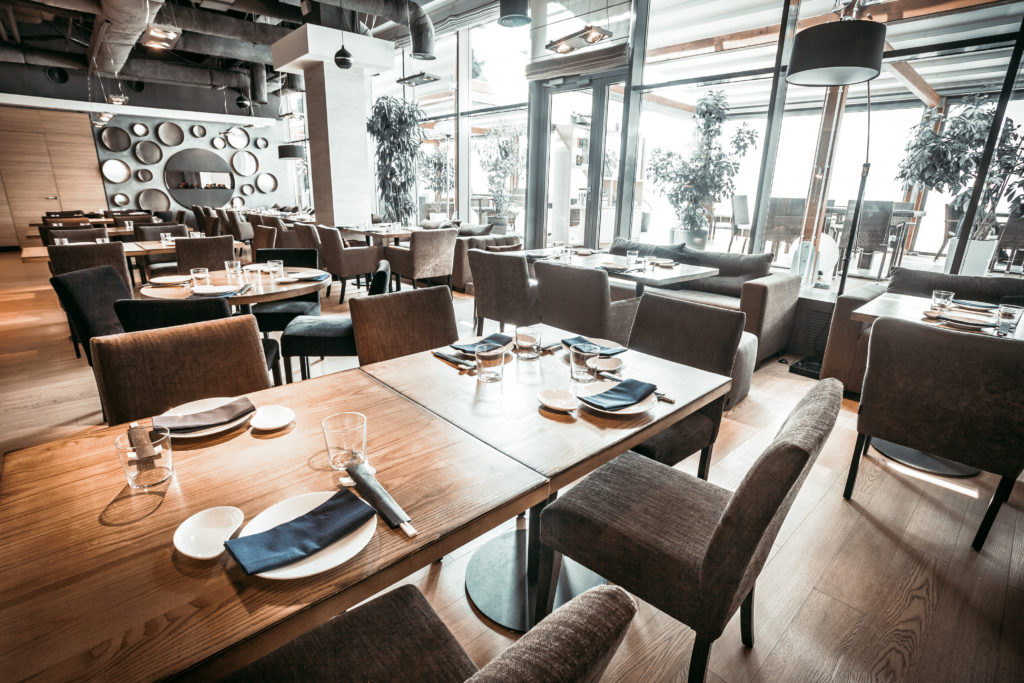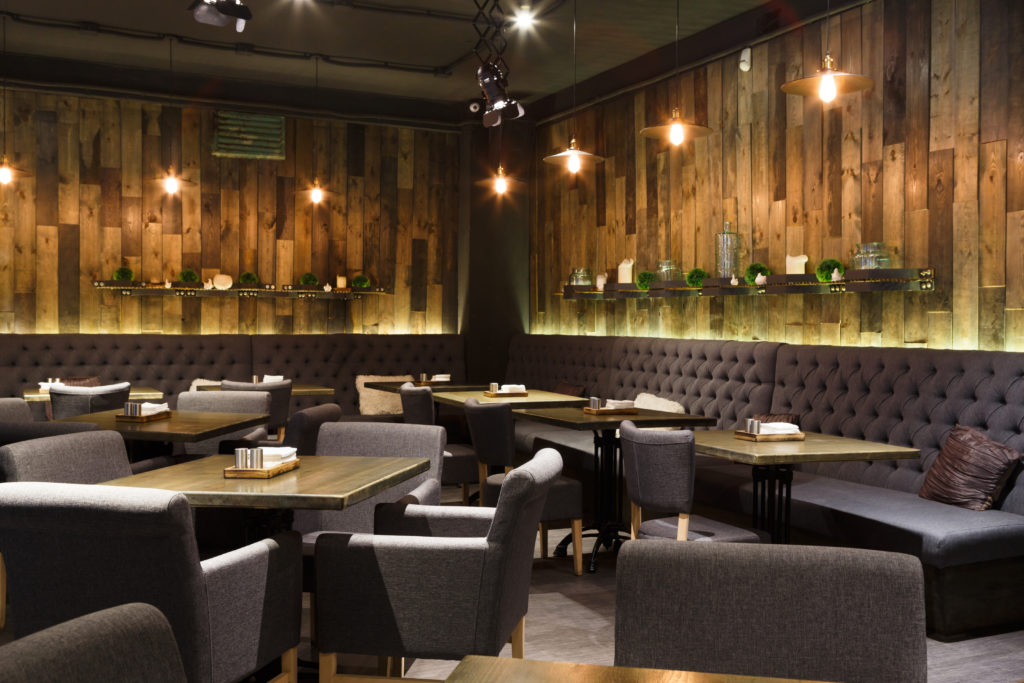Choosing the right furniture and layout for your restaurant is just another example of what makes working in the culinary industry so much fun. It requires balancing creative artistry with considerations of operational efficiency, and doing it all on a budget….just another day in the life of a food entrepreneur.
Furnishings are a large investment and a major component of setting the restaurant’s atmosphere. The style of your furnishings will influence how people experience your food and service, and the layout is critical to restaurant operations and profitability.
For a deep dive, consider learning from restaurateurs who have made these decisions before with an associate degree in Food & Beverage Operations. In the meantime, here are the basics:
1. Map the Layout of your Space
The more seats you have in your restaurant, the more potential for paying customers at any one time. But if you try to squeeze too many people into your space, things will feel cramped.
Maximizing seating needs to be balanced with designing a space that feels open and not too crowded. Guests should feel comfortable and able to experience some degree of privacy and intimacy.
You can use graph paper or an online service to experiment with different layout options. Try Affordable Seating’s Restaurant Design Guide, which offers guidelines on how much space to have in between tables.
Most restaurants have preferred seating by the windows, booth seating, or tables with extra privacy. Once these seats are filled, how can you make the rest of your seating as appealing as possible?
Undesirable tables tend to be near the bathroom, front door, wait station, or other loud, high traffic areas. By building additional walls or adding large plants, you can block out noise and traffic while creating cozy and private areas throughout your restaurant.
COVID-19 restrictions have created additional challenges for restaurants, and regulations may vary by state, county, and city. Guidelines and links to state and local health guidelines can be found at the CDC website.
In most cases where indoor dining is allowed, customers need to be seated at least six feet apart. The CDC also recommends that restaurants “install physical barriers, such as sneeze guards and partitions, particularly in areas where it is difficult for individuals to remain at least 6 feet apart.” These factors should be factored into your planning as well.
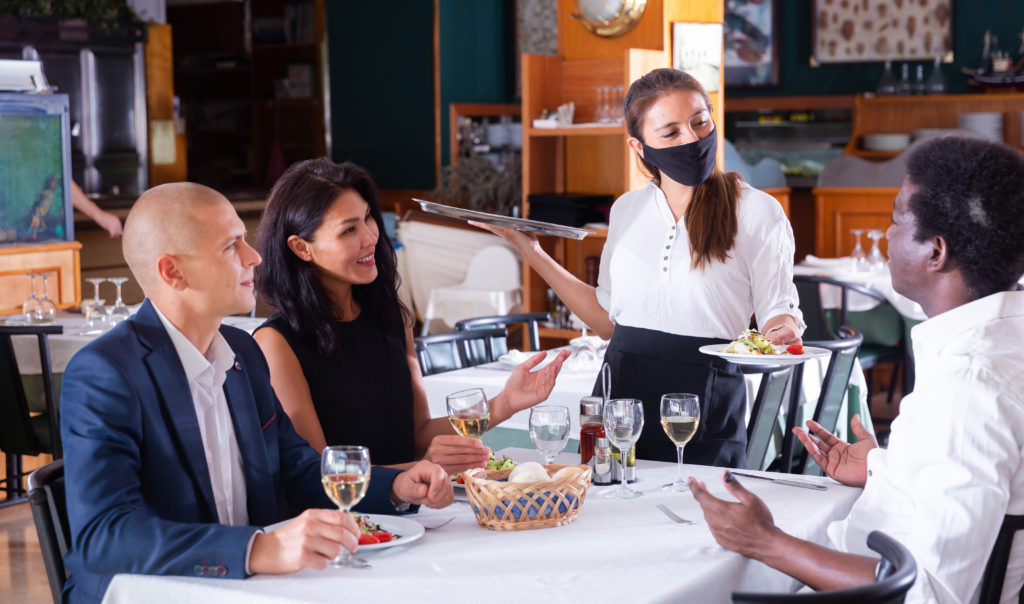
2. Highlight Your Restaurant’s Style
In the age when restaurants are promoted on social media, the look and feel of your restaurant is more important than ever. New customers may be drawn to your restaurant just because they like the ambiance of your space displayed in photos posted on Instagram, Facebook, or Yelp.
To ensure that you are designing a space that appeals visually, you may consider hiring an interior designer to assist you.
If you aren’t using a designer, spend some time researching. Visit other restaurants and take note of what works well. Look online, or thumb through magazines to collect samples of styles that will provide the dining experience you want.
Most current style trends veer towards clean and modern. Selecting wood or solid colored tables provides a neutral base for your restaurant’s theme.
Chairs can also be matching neutral colors, or you can choose ones that add a splash of color. Plants, lighting, and artwork can then be used to add natural and colorful aspects to your design.
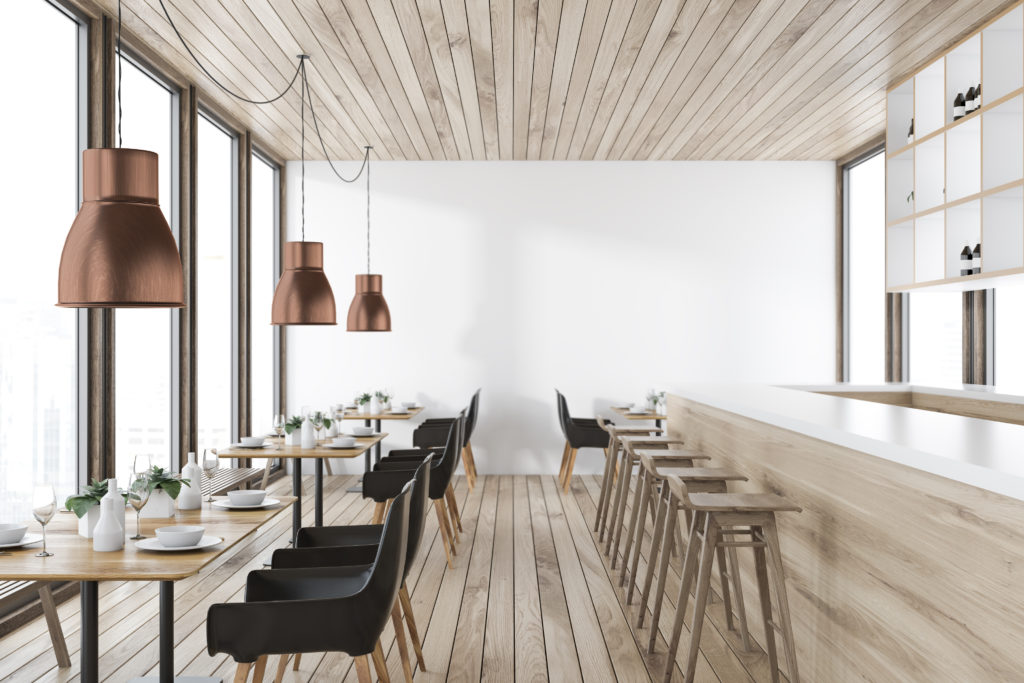
3. Select Functional Furniture
Some things to consider when taking functionality into account are how long guests will be sitting, what the average party size will be, and how often you will need to move tables.
Guests dining in a fast casual restaurant generally do not stay for long, and the comfort level of seating is not that important. For those establishments the focus will be more about durability. On the other hand, fine dining guests may sit for over an hour, and attention needs to be paid to selecting chairs that are comfortable for a long period of time.
Booths are a desirable seating option if you have enough space. Guests overall find them comfy, they offer privacy, and research shows that guests’ spending per minute is slightly higher at booths versus tables.
Tables and chairs, on the other hand, provide greater flexibility and can be moved to accommodate larger parties. That’s why many restaurants go with a combination of booths and tables.
During the COVID-19 pandemic, some restaurants are using pods or igloos to create individual seating areas. Most are providing as much outdoor seating as possible. Furniture selected for patios and rooftops needs to be weather-resistant. These areas may also need additional accessories like heat lamps for cold weather, and umbrellas to protect guests from sun and rain.
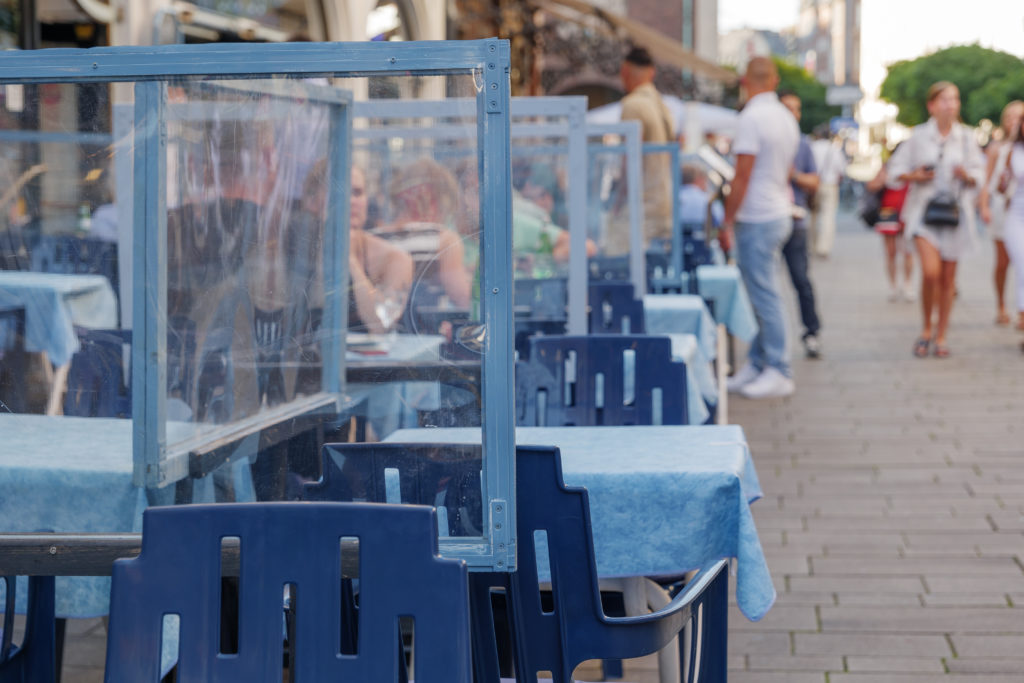
4. Don’t Skimp on Quality
There will be a lot of wear and tear on your furniture, and selecting pieces that will last saves money in the long run. That’s why it’s important to pick pieces that wear well, are commercially- rated, and can be easily replaced.
Ask other restaurateurs for recommendations. Scour reviews not only of companies but of the specific furniture pieces you are interested in to find out what others are saying. Look for comments about durability, and if the company is reasonably-priced. While you don’t want to purchase pieces that are cheap and will quickly need replacing, you also don’t want to overpay.
Remember to look at return policies and warranties. Carefully inspect all furniture upon arrival to ensure it is in pristine condition. Ask how long the line will be in stock and order some backup furniture. You don’t want to be stuck in a jam if you need to replace or add a few new chairs or tables, and they are no longer available.
Following these guidelines, you can make a thoughtful, strategic design for your restaurant and wise purchasing decisions. With a bit of research and planning you can feel confident you are selecting furniture that will be comfortable, functional, long-lasting, and will integrate well with your theme.
Interested in advancing your culinary entrepreneurship education? Auguste Escoffier School of Culinary Arts offers degrees or diplomas in Culinary Arts, Pastry Arts, or Food & Beverage Operations. Here’s where you can get more information on all of our programs!
Here are a few more articles on starting a restaurant:

